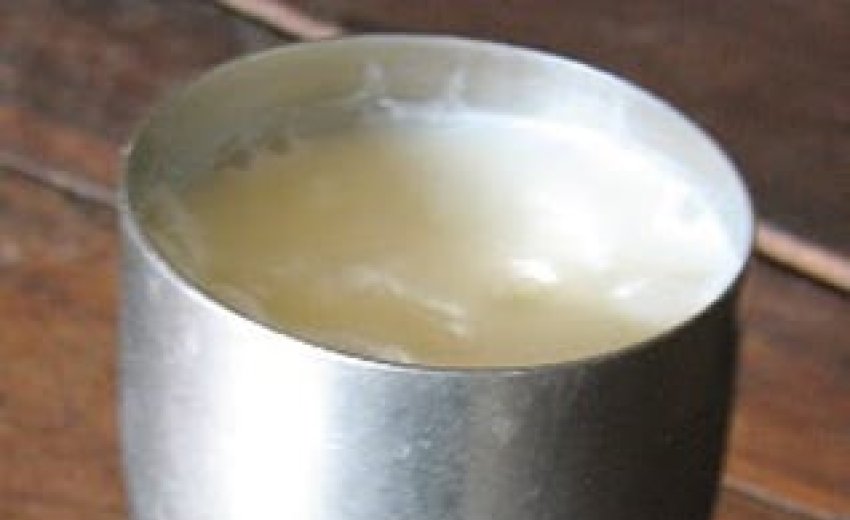‘Shardaayi’, a word not known to many has existed in the Sikh culture for years now. Let’s look into an account by Gurmeet Kaur to get an overview of why ‘Shardaayi’ is considered the nectar of warriors.
Embarking on the cherished journey down memory lane, one of the fondest recollections from my maternal grandparents' abode, fondly referred to as 'naanke,' involves the delightful ritual of preparing and savoring 'shardaayi' – a delectable nut milk – each day of our summer sojourn. This family effort was not only nourishing but also became a collective effort to combat the relentless heat of the northern plains, fostering a shared appreciation for the richness of traditional foods. Intriguingly, this sweet elixir, known by various names, including shardaayi, has garnered fame as the invigorating beverage fueling the predominantly vegetarian yet robust and valiant warriors of Punjab – the esteemed Nihang Singhs.
About Nihangs
The Nihang, also called the Akali or Dal Khalsa, is a group of armed Sikh warriors with origins in the Indian subcontinent. They are often referred to as "Crocodiles" or "The Immortals." The Nihangs are believed to trace their roots to Fateh Singh or the "Akal Sena" initiated by Guru Hargobind. In early Sikh military history, the Nihangs played a prominent role, displaying remarkable bravery and achieving victories despite being outnumbered. These warriors, once part of the Sikh Empire's armed forces, were known for their guerrilla tactics. Additionally, Nihangs are recognized for carrying a stash of nuts, seeds, and herbs, along with a mortar-pestle combo, wherever they go.
Shardaayi
Making shardaayi was a cumbersome task, but with many helping hands, my Grandmother, her six daughters, myself, the eldest granddaughter, my siblings, and cousins all joined forces to tackle the job. The process began by rinsing, drying, and peeling the magaz (seeds from musk melon and cantaloupes). The more hands, the better. Almonds were blanched, cardamoms de-podded, and seeds and saffron were soaked. All these ingredients were meticulously ground in a large stone mortar and pestle. The children eagerly awaited their turns, though quick to pass the task along; it was indeed hard work. Gradually, water and sugar were added, and there it was – a collaborative effort resulting in something extremely delightful!
In the 1970s, the sheer delight of shardaayi, poured over ice cubes, was a refreshing treat, sweet, fragrant, and nutty, sometimes adorned with rose petals. Fast forward to the 2000s, and my journey into health, veganism, and environmentally friendly foods led me to rediscover the wisdom of old-time recipes from my Punjab roots. Shardaayi, with its nostalgic taste and association with the strong Nihang Singhs, became a staple in my diet.
Beyond its flavour, a nutritional analysis surprised me, revealing complete proteins, essential amino acids, and a wealth of vitamins and minerals crucial for a robust nervous system, heart health, and the well-being of bones, muscles, and the brain.
This rediscovered drink has now become the fuel for our predominantly vegan yet active lifestyle. Though my modern blender may have replaced traditional methods, each sip takes me back to my grandparent's courtyard. After enjoying this revitalizing shardaayi for the past 2-3 years, I've decided it's time to share the goodness.
The recipe for this delectable beverage
The recipe has been modified a bit to use local nuts and seeds. Let’s look at it. For 4 servings, add:
1/2 cup of nuts (Almonds and/or Pistachios)
1/2 cup of seeds (Sunflower, Pumpkin and/or Melon)
A tablespoon of Poppy Seeds
A teaspoon of fennel seeds (if you like the flavour)
A pinch of Saffron A few black peppercorns
A pinch of cardamom seeds (discard the pods first)
Water for desired thickness
Sugar or Honey for desired sweetness
Step-by-step process
To make shardaayi, start by soaking nuts overnight. In the morning, peel off the almond skins as they loosen during soaking. Then, soak the remaining ingredients. Grind all the soaked ingredients into a smooth paste, adding water gradually. Blend in a suitable amount of sweetener and the rest of the water. Chill the mixture before serving. Shardaayi can be refrigerated for a couple of days and, in winter, can be boiled with chopped dates for added warmth and body instead of sugar. This nut milk surpasses its dairy counterpart in nutrition and has a smaller carbon and cruelty footprint.
Give it a try, and you'll understand why it remains an integral part of the diet of the great Sikh warriors of Punjab.
*Based on an article by Gurmeet Kaur, published in SikhChic.com on 3rd March 2010
